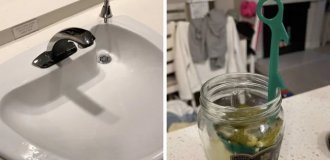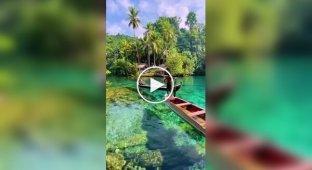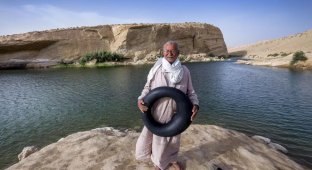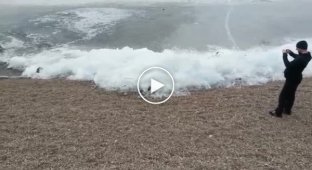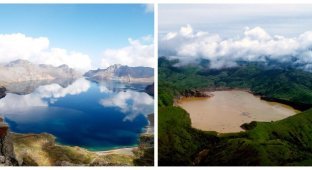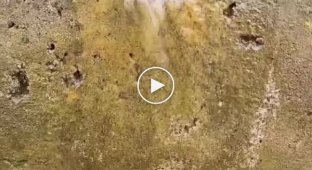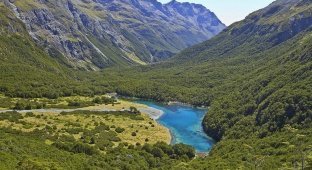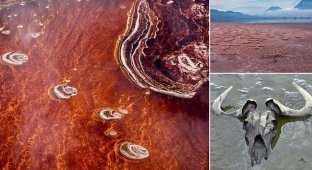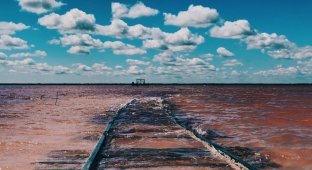Blue-Red Lake: Why are parts of the Great Salt Lake different colors? (3 photos)
In the pictures from above it looks fantastic: like a ruler, the reservoir is divided into two parts. One of them is a traditional blue color with a green tint, and the other is brown-red, dark. 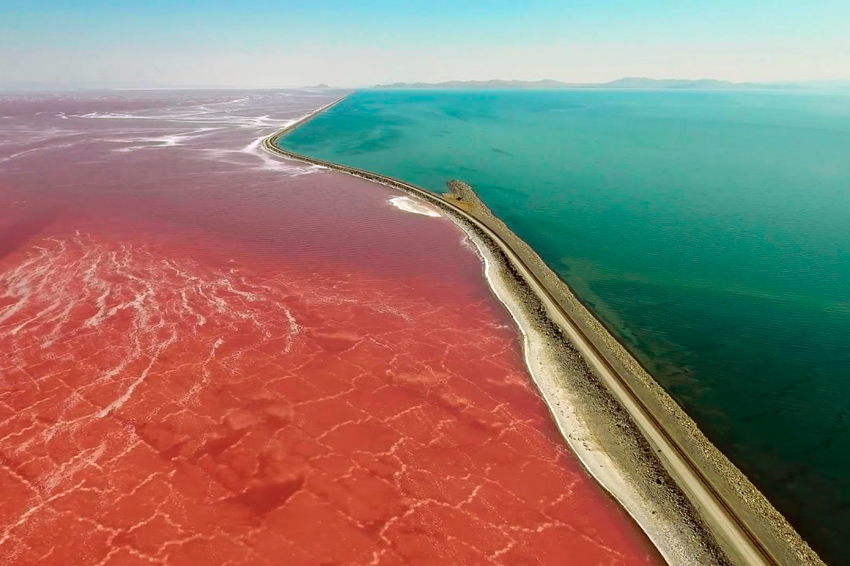
The Great Salt Lake is an endorheic salt lake in the western United States, in the northwestern part of Utah.
In the North American state of Utah, near Salt Lake City, there is the Great Salt Lake.
How did it happen that one lake has water of different colors?
What keeps it from mixing?
Dead but alive
The Great Salt Lake is often called the American Dead Sea. Although it contains life, the lake is similar to the famous Israeli reservoir with a high concentration of mineral salts.
It is located in a desert area.
The rivers flowing into the lake bring fresh water, but it evaporates. And the concentration of salts in the reservoir remains consistently high. But it is not constant: during the flood season it drops to 50%, and in the dry months it rises to 270%.
Although the lake is shallow - up to 15 m, but with an area of 5 thousand square meters. km. plays an important role in the local microclimate, making it more humid and soft. 
Just 70 years ago, the reservoir was a normal color for lakes—blue.
What made him change color?
We wanted the best, but what we got was colorful
In the first half of the 20th century, infrastructure development in the United States required the construction of a new railroad in Utah.
The elongated lake became an obstacle on her way.
Since the reservoir is shallow, it was decided not to make a huge detour along the banks, but to throw a branch of the road along an overpass through the center of the lake in a narrow place.
It was built and the movement started. Then, for safety reasons, it was decided to turn part of the overpass into a dam.
The builders believed that they would not harm the lake, since several channels were left under the railway, providing communication between the two parts of the lake.
But everything didn't go as planned. 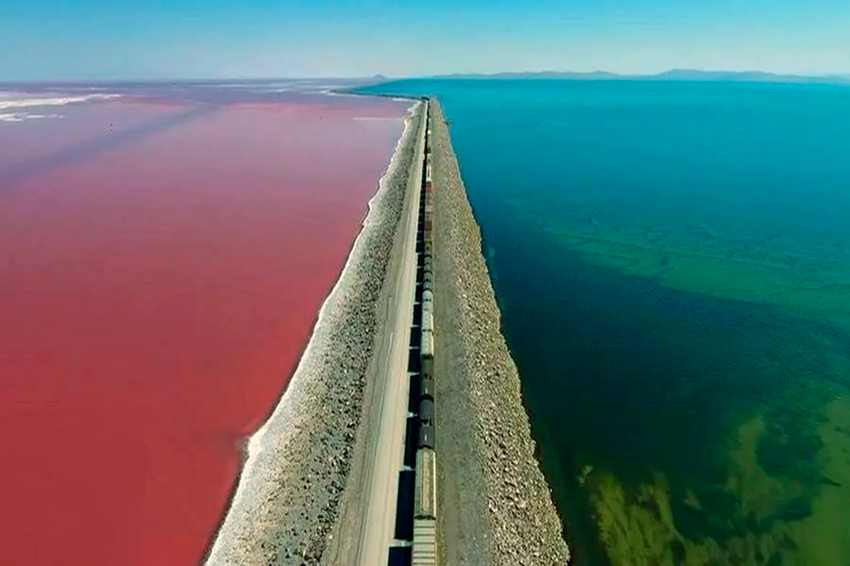
The holes in the dam were not enough for water exchange.
One part of the lake began to shallow, while the other, on the contrary, began to rise.
Things even went so far as to drown settlements on the banks.
The shallowing northern part naturally became increasingly saltier. And the microorganisms Dunaliella salina and Haloarchea won. They secrete red and pink substances. As a result, over several decades this part of the lake became completely colored.
More fresh water flowed into the southern part. And it contains microorganisms that give the water a blue tint.
Accordingly, a completely different system of flora and fauna has developed in the two parts of the lake.
Together but apart
When the problem became obvious, the search for solutions began.
The authorities were worried not so much about the colorfulness of the lake as about the threat of flooding in the southern part.
Part of the dam under the railway was replaced with a bridge.
Today, nothing prevents water from moving freely throughout the lake.
But in the two parts of the reservoir, such different ecosystems and water densities have already developed that mixing has not yet occurred.
The natural aquacline allows the lake to maintain its original two-color appearance.








